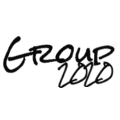Effective soil health management is crucial for sustaining agriculture, adopting ecosystem resilience, and preserving water quality. However, Missouri's diverse landscapes limit the effectiveness of broad generalized management recommendations. The lack of resolution in existing soil grouping systems necessitates data driven, site specific insights to guide tailored interventions. To address these critical challenges, a regional soil clustering framework designed to support precision soil health management strategies across the state. The methodology leveraged high resolution SSURGO dataset, explicitly processing soil properties aggregated across the 0 to 30 cm root zone. Multivariate analysis incorporating a variational autoencoder and KMeans clustering was used to group soils with similar properties. The derived clusters were validated using statistical metrics, including silhouette scores and checks against existing taxonomic units, to confirm their spatial coherence. This approach enabled us to delineate soil groups that capture textures, hydraulic properties, chemical fertility, and biological indicators unique to Missouri's diverse agroecological regions. The clustering map identified ten distinct soil health management zones. This alignment of 10 clusters was selected as optimal because it was sufficiently large to capture inherited soil patterns while remaining manageable for practical statewide application. Rooting depth limitation and saturated hydraulic conductivity emerged as principal variables driving soil differentiation. Each management zone is defined by a unique combination of clay, organic matter, pH, and available water capacity. This framework bridges sophisticated data analysis with actionable, site targeted recommendations, enabling conservation planners, and agronomists to optimize management practices and enhance resource efficiency statewide.
翻译:暂无翻译



